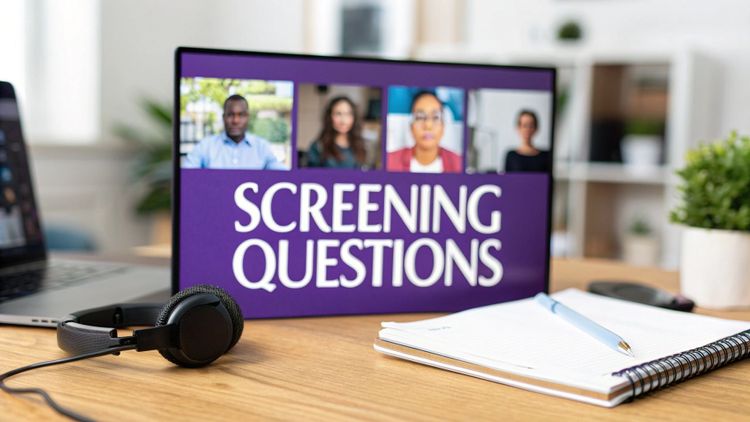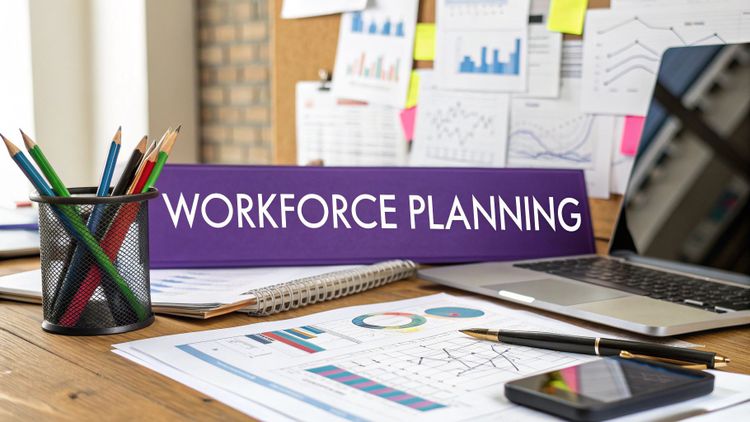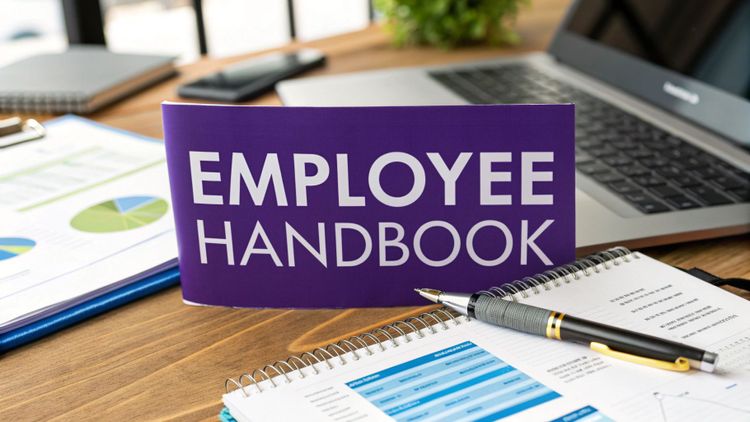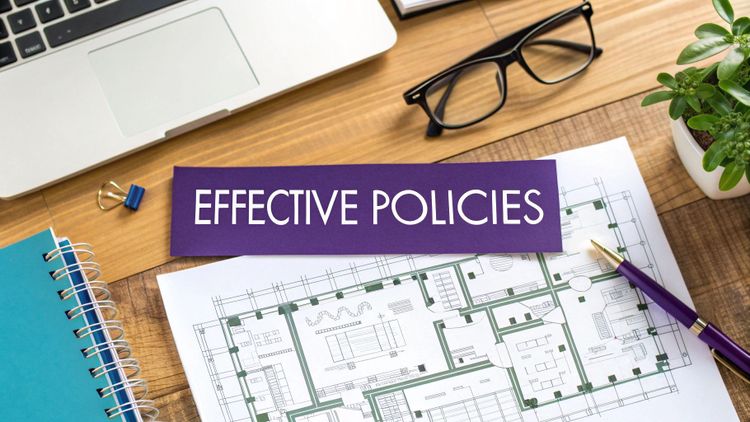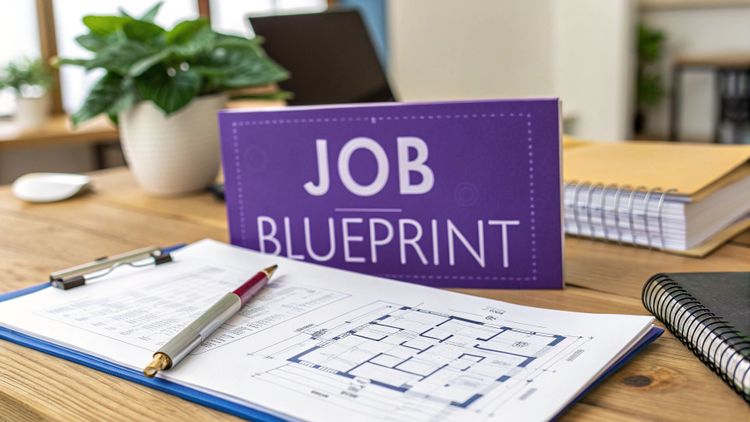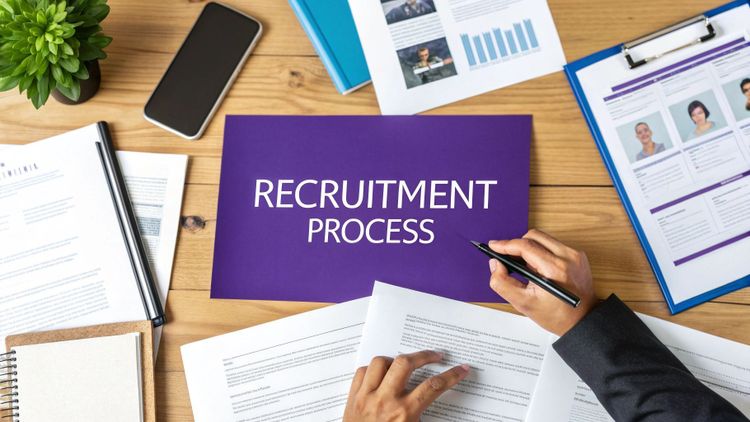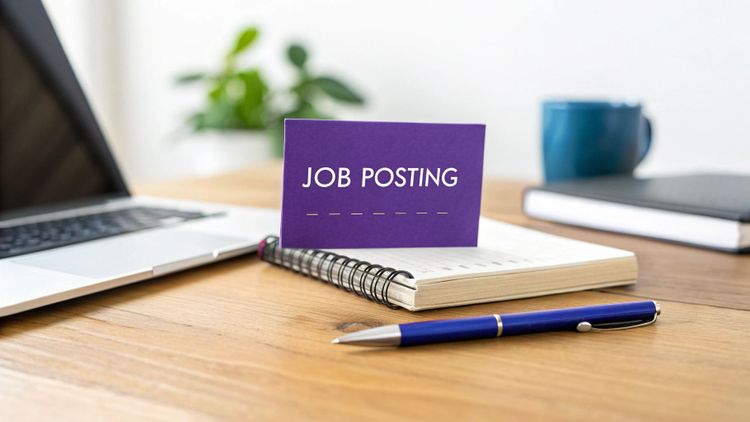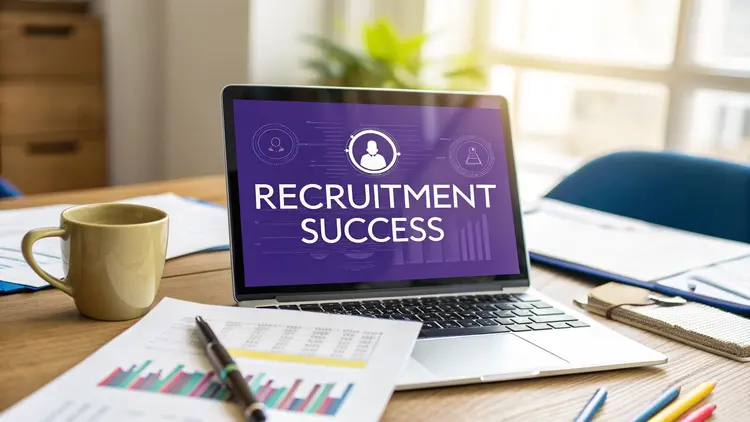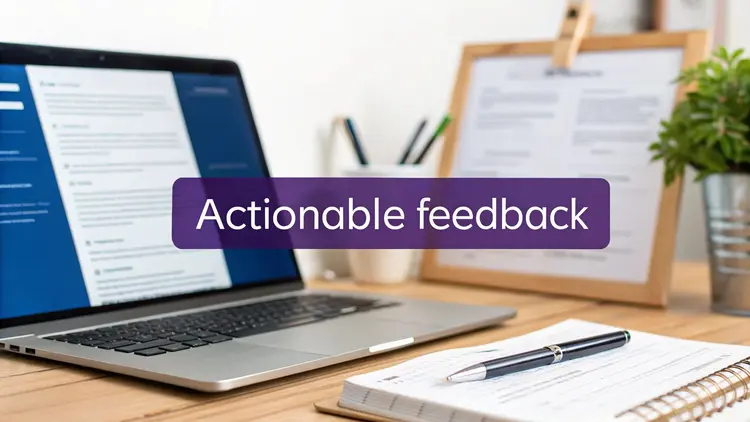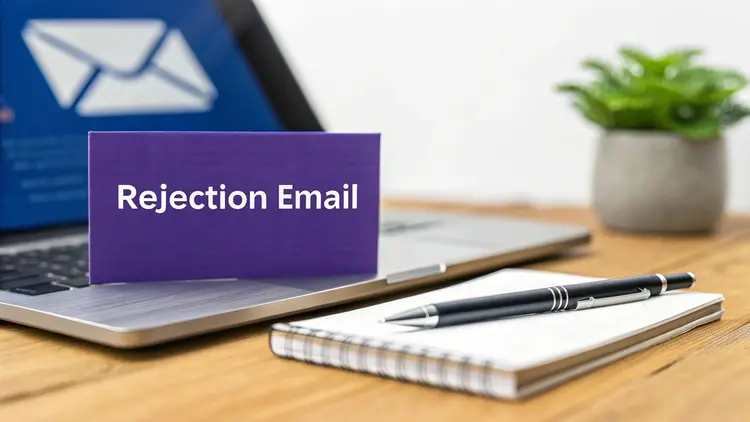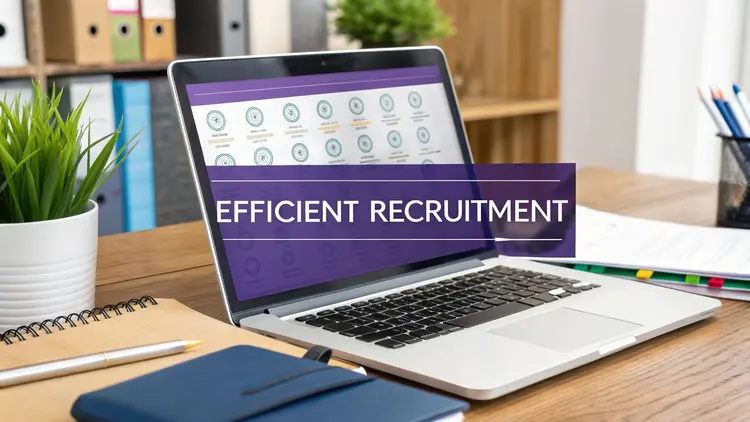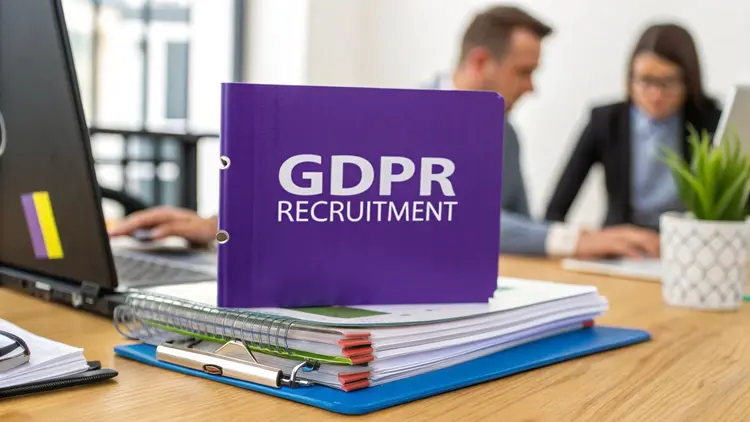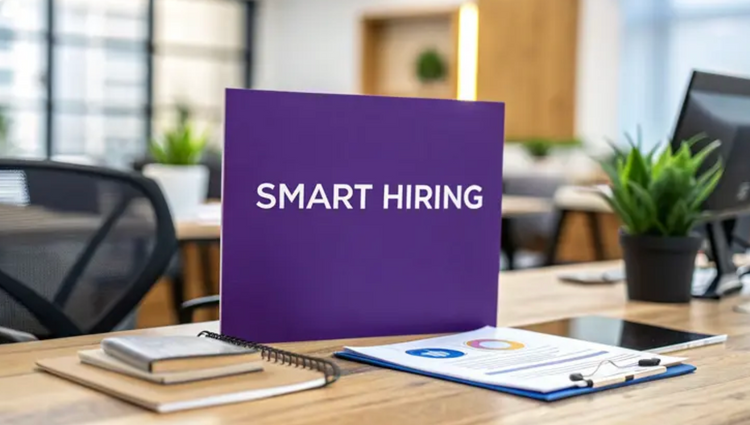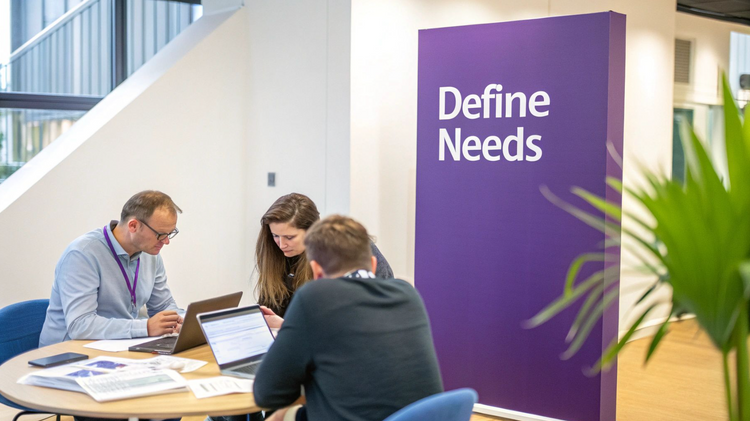HR Processes
How to Conduct an Effective Online Interview

Interviews are one of those things that are easy to do but difficult to do well, especially when conducting it online.
The good news is you can structure an excellent interview, despite the online barrier - and that’s exactly what we’ll talk about in this article.
Here’s how to conduct an effective online interview, step-by-step.
Need an easy way to keep track of candidate interviews? Download this interview schedule template to stay on top of past and upcoming interviews in one place.
1. Prepare your questions beforehand
The first step to conducting an effective interview is preparing the questions that you’ll be asking the candidate. After all, having a list of standardised interview questions is helpful for any interviewer as it saves time and mental energy.
That said, these questions have to be relevant, revealing, and as personalised as possible, particularly if you’re hiring for a senior position. You can do this by looking over their resume and jotting down points you’d like to know more about. You can also compare their qualifications and experience to the job description.
With SeeMeHired, you can save interview question templates so everyone on your team has a central place to find them and you can implement a standard interviewing process.

2. Test them with real-world scenarios
When you’re interviewing for a position, one of the first questions that come to mind is the cookie-cutter “What makes you think we would hire you?”
Avoid this type of question if you want an interesting discussion. Not only is it incredibly cliche, but it’s also highly likely that you’ll be hearing nothing but rehearsed answers from your candidates.
Instead, test your candidates with a real-world scenario and examine how well they handle it. For example, tell them about an issue you’ve been facing recently that’s related to their job and ask them what they would do if they were in the situation. You can also ask creative interview questions that will give you a better insight into who they are, not just as an employee but also as a person.
3. Communicate the details in advance
One of the things that can make a job interview so stressful is the many unknowns. Candidates are often anxious about the questions they’ll be receiving, the kind of person their interviewers will be, and the dress code, among many other factors.
Although this is expected, keep in mind that nervous candidates likely won’t be able to perform their best. Studies have shown that when people are too stressed, their cognitive abilities are affected, leading to reduced performance.
If you want to assess your candidates accurately, you have to address their fears. An easy way to do this is to minimise the unknowns: tell them the interview details in advance, including the complete schedule, the topics to be discussed, and the interview goals.
The more your candidates know what to expect, the more their confidence grows. And the more confident they are, the more you can get to know their best self.
4. Don’t cut it short or let it drag on
Make sure you allocate the right amount of time to get to know your candidates better.
Short interviews are fine for low-level positions, such as seasonal or temporary hires. However, if you’re planning to make a permanent or long-term hire, it’s best to set aside a bigger block of time to properly assess how well they fit your team.
Remember, the cost of a bad hire can be huge. Not only have you wasted money and company hours from advertising to the interview and hiring, but you also have to account for future expenses such as training costs, productivity disruption, or worse, reduced morale.
With this in mind, take your time interviewing candidates who are applying to important positions within the company.
That said, don’t let it drag on for an unnecessarily long time either. Beyond a certain point, long interviews can feel draggy, making your candidate uncomfortable. It’s also a waste of precious time.
To make sure that you’ve properly allotted time for each candidate’s interview, it’s helpful to have a built-in interview scheduling tool right in your Applicant Tracking System (ATS). With SeeMeHired’s native interview management, you can ensure that everything goes to plan for both you and your candidate.
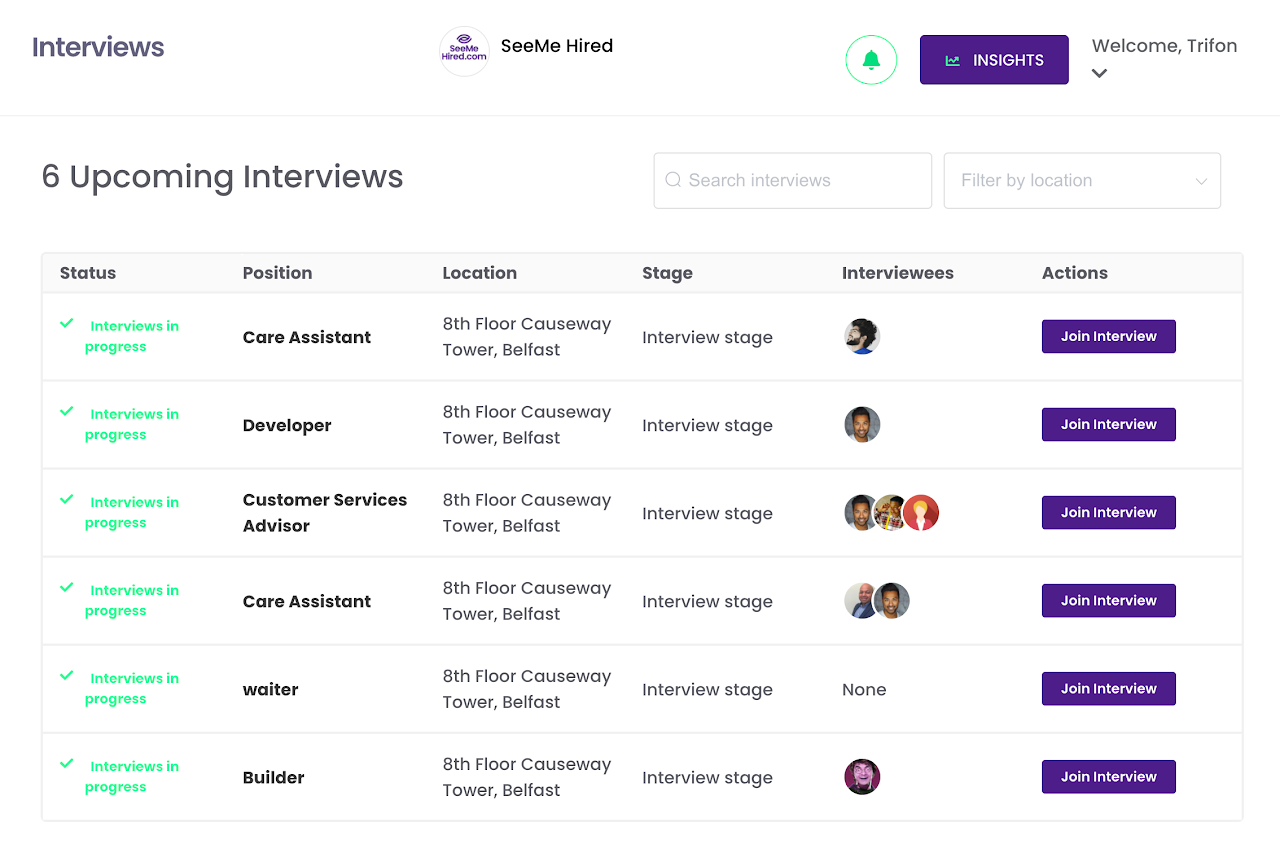
5. Make sure the video platform is working well
There’s nothing worse than a buggy, laggy, and unstable video connection when conducting an online interview.
It doesn’t just ruin the whole experience. If the issues are persistent enough, you may have to reschedule the interview, therefore wasting everybody’s time in the process.
Now that the most preferred — and, in light of the pandemic, often the only available — method of interview is through online video conferencing platforms, this becomes an even more significant consideration. The reliance on these apps can easily become a chokepoint for any hiring manager’s productivity, adding yet another tool to manage in your workflow.
The best thing you can do to prevent this from happening is to use recruiting software with an integrated video conferencing tool, such as SeeMeHired.
With SeeMeHired, you can conduct the video interview right on the platform, vastly reducing the inconvenience of relying on third-party apps. In addition to that, you no longer have to worry about your candidate not knowing how to operate the platform. Since the video conferencing function is fully integrated, it’s easy to use and always available for every recruiter and applicant on the SeeMeHired platform.

6. Let them know what they’re in for
Interviews shouldn’t just be about you learning about your candidates. They’re a great way to let your candidates learn more about your company, too.
One way to do this is to give them some background information, focusing on the role they’re applying for and how it affects the organisation. You can also give them your personal insights. Think of it as an insider’s scoop of what it’s like to work in your company.
Doing this can have plenty of benefits. For instance, if a candidate likes your company, it raises the likelihood of them seeking other positions in your company in the future, even if they get rejected now.
7. Understand your candidate’s career goals
You’re hiring a candidate who will ideally stay with you for at least a few years and will hopefully move up in rank beyond what you’re hiring them for.
Thus, it’s important that you understand what the candidate wants out of their career and whether their goals fit the position. This should be something that you have a firm idea about from the get-go so that you won’t have any surprises down the road.
Look for signs of how engaged they are in the role, how interested they are in the industry, and how determined they are to advance. You want someone that displays positive traits in all of those areas.
8. Don’t be afraid to ask follow-up questions
You can dive deeper into a candidate’s reply by asking follow up questions instead of just moving to the next one in line. This will challenge the candidate and uncover insights that might otherwise be missed.
So don’t hesitate to ask follow-up questions beyond your standardised list.Aside from getting your questions answered more fully, follow-up questions can also give you an idea of how well and how fast candidates can think on their feet.
9. Mind your body language
Video calls feel very different from personal meetings. When we hop on a video conference, we often forget that it’s just as formal and professional as a personal meeting.
So the next time you hop on a virtual session, don’t forget that you’re still conducting an interview. Gestures that you normally perform when talking may be off-camera, so keep this in mind.
Position your camera in the optimal position, not too high nor too low, such that your camera is approximately at eye level. Also, no matter how good your camera is, sudden and jerky movements may cause camera lag, so avoid those, as well.
These things may seem minor, but they go a long way in elevating the call’s professionalism and making the candidate feel more at ease.
10. Set aside ample time for Q&A
When scheduling an online interview, allot an adequate amount of time to answer any questions that the candidate might have for you.
Remember, having questions at the end of an interview session is a sign of initiative and interest, so plan enough time for questions by candidates who are eager to learn.
11. Let them know what comes next
For many candidates, one of the scariest parts of the interview is the end. Did they do well? Do they have a chance of getting accepted? What happens next?
Current situations might further exacerbate these fears. For example, it might be their first time undergoing an online interview and they are unfamiliar with the next part of the process.
To avoid this, always tell your candidates what comes next. No candidate should ever end the call, not knowing when you will make your decision, how you will contact them, and if they should expect feedback.
Knowledge combats the unknown and dispels the greatest of fears. Use this to your advantage in strengthening your branding and enhancing the candidate experience.
Conducting an Online Interview with SeeMeHired
Interviews are crucial to the hiring process, so you want to do them right, no matter the medium. Online interviews may be a relatively new way of doing an old process but it has proven to be an effective alternative – and it seems like it's here to stay.
That’s why it’s important to adapt and learn the best practices in conducting an effective online interview session. As long as you follow our advice, you should be good in most situations.




